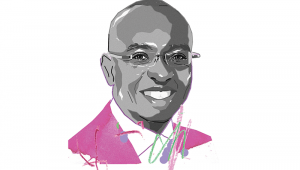The survey, commissioned by executive search firm Green Park, reveals that the civil service as a whole is around 97% white at its senior levels, with just 3% made up of ethnic minorities – compared with the 13% UK national average.
Moreover, in local government, ethnic diversity has actually fallen since the last survey, and there are now no non-white local authority chief executives.
The Green Park Public Service Leadership 5,000 is the largest survey of its kind, and maps the gender and ethnocultural diversity of selected board and executive leaders in public organisations and charities.
Last month, prime minister Theresa May announced a ‘race’ audit to get a clear picture of the diversity of Britain’s public sector. She highlighted the impact that greater diversity would have on the BAME population across areas like health, education and employment.
The survey compilers noted that Britain will soon need to engage with the rest of the world to negotiate trade deals from outside of the European Union, for the first time in around 40 years. But the survey suggests there are no senior civil servants with East Asian, African or Latin American heritage in the departments most likely to lead this work.
It stated: “Increasing diversity and boosting the experience and knowledge relevant to these markets would increase Britain’s ability to negotiate the deals required to maintain our valuable trade agreements.”
It found that there were no employees of Black or Chinese/Other Asian origin in the four top grades within the key departments dealing with the UK’s economic relationships with the rest of the world. The Foreign and Commonwealth Office is 90% white, with the rest of its staff made up of Muslim, Hindu or Hispanic heritage backgrounds.
The Cabinet Office, which is responsible for senior public appointments, is 100% white. The (previously) Department for Innovation and Skills, Department of Health and Department for International Development performed worst on ethnic diversity in leadership roles, all with top teams of 100% white staff. The Ministry of Justice had the highest level of BAME diversity at 9%.
At senior levels, the civil service (97% white) is less diverse than the same level of the FTSE 100 (93% white).
London’s boroughs, forming the UK’s most diverse city with a BAME population of around 40%, perform worse than all the other core cities in representing the population they serve. London borough leadership is 90% white compared with 89% for the eight other core cities. There are no Muslim or East Asian staff at the top two levels of leadership across London.
The least diverse councils are Manchester City Council at 5.3% and Bristol City Council 7.5%. The most diverse council was Liverpool City Council at 26.9%.
In terms of public bodies, of the 745 people in leadership roles in the most prominent bodies outside government and local authorities – such as the Bank of England, NHS England and the BBC, just 22 (3%) were non-white.
From a gender perspective, women are underrepresented at the top level of the civil service by around two-to-one. The best performing departments for diversity were Education and Health, and the worst two were the Foreign Office and the Ministry of Defence.
The most gender diverse boroughs are Waltham Forest (56.3% female) Barnet (53.1%) and Haringey (52%). Hillingdon (21.7%) and Hounslow (20%) are the least diverse.
Women leaders were more likely to be found in non-executive director roles on the boards of public bodies rather than executive director roles. They are under-represented in the most powerful functions, for example chief executive officer, and corporate resources and finance.
Raj Tulsiani, chief executive of Green Park, said the results showed the country had a long way to go to capitalise on its diversity. “This year’s data shows that we have actually regressed, in general, across the board,” he said.
“The huge distance between the make-up of local authority leaders and the population they govern is particularly alarming.”
Trevor Phillips, chair of Green Park diversity analytics, added that “collectively we may look to others like a nation that has not moved on from the days of colonialism.
“At the very least we may be losing out on valuable cultural insights which could give us a competitive advantage in the global markets,” he said.




















